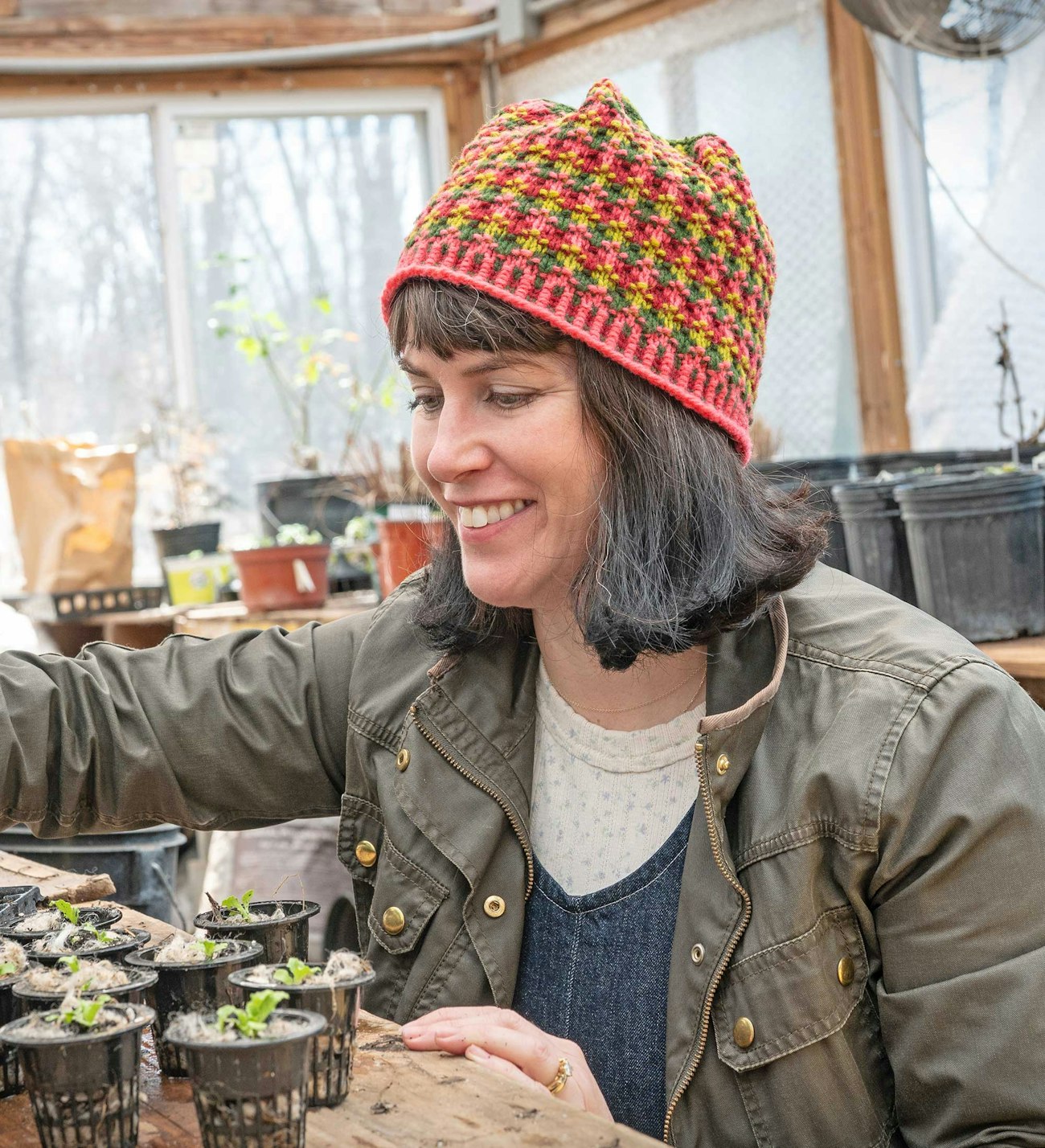Traditional stranded colorwork knitting is most often entirely worked in stockinette stitch. However, as designer Tanis Gray explains, the Swedish Bohus Stickning design group remains famous for their clever use of well-placed purls starting in the 1940s:
Bohus Stickning (Bohus knitting) was the brainchild of a group of women from Bohuslän, located in the westernmost province of Sweden. Famed for its beauty, fishing, and quarries, this area was deeply affected by the economic struggles of World War II, resulting in women from the community asking the governor’s wife, Emma Jacobsson, to set up a home-based industry.
Beginning with simple projects such as plain gloves and socks, Emma created the first patterns out of heavier wool. As the group worked toward creating luxury knits for wealthy patrons in isolationist Sweden, Emma sourced angora and much finer wool, with many designers contributing increasingly intricate and colorful patterns. At the height of its popularity in the 1950s, Bohus knitting was widely recognized and worn across Sweden and abroad.
Bohus Stickning’s hallmark is stranded colorwork with well-placed purl stitches that create broken relief patterns. These motifs, combined with the halo from the angora in bright color palettes, make this type of knitting instantly recognizable.
The reason that purl stitches can introduce so much color complexity is because the little bump we see in a purl stitch is actually the top of the stitch in the previous row. If that stitch below were to be a different color, we can create color mixing that isn’t possible in stockinette, while also adding a three-dimensional look to the surface of the fabric.
 The color of each purl stitch contributes to the three-dimensional look to the fabric. Photo by Matt Graves
The color of each purl stitch contributes to the three-dimensional look to the fabric. Photo by Matt Graves
Planning the Pops
If you take a close look at the chart and knitted fabric in Tanis’s Modern Bohus Hat, you’ll see that the chart squares with dots (purl stitches) are not the colors that appear as purl bumps in the fabric. Working a dark green purl stitch creates a bright pink bump due to the stitch below! So, if you choose to change the colors in this sweet hat to make it your own, you’ll want to knit a swatch and see how your color placement works.
Managing Yarns
Depending on how you hold your yarns for stranded knitting—both yarns in left or right hand, or one yarn in each hand—you might find purling on the right side a challenge. If you hold both yarns on the left or right, you might need to adjust your technique or practice moving the yarns to the front of the work to purl and shifting back again to get comfortable with it. You might also find that your gauge changes compared to stockinette-based stranded color knitting. This small project is a great way to settle into the technique and build your skills.
—Kate Larson
 This stranded-colorwork pattern with purls is repeated across the body of the hat and looks much more difficult than it is—no more than two colors are ever worked across at a time.
This stranded-colorwork pattern with purls is repeated across the body of the hat and looks much more difficult than it is—no more than two colors are ever worked across at a time.
Learn More
Tutorial Colorwork Tension Trouble: 3 Common Problems and How to Fix Them
Tutorial Blocking Hats and Tams
Article Tips and Tricks for Fair Isle Knitting
Subscribers can find the Modern Bohus Hat in the Farm & Fiber Knits Library.
Also find the Modern Bohus Hat in the new eBook, The Creative Color Collection.

